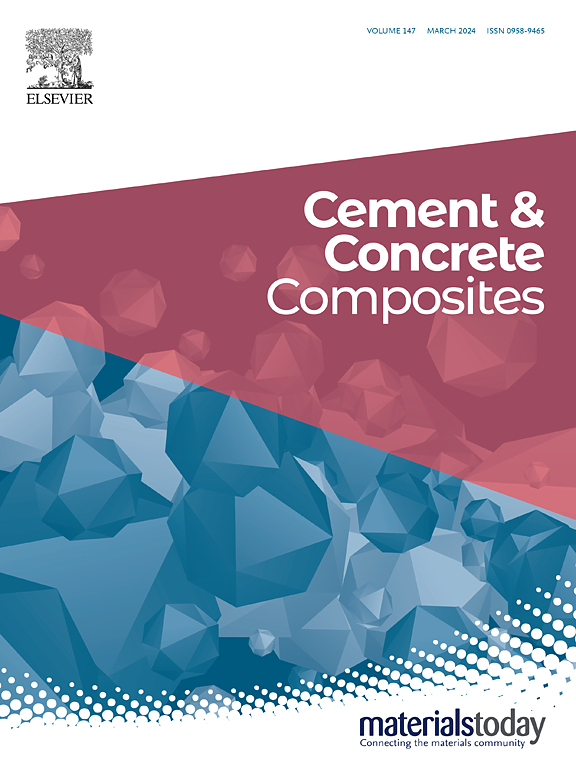井中水泥环在养护过程中的应力演化研究
IF 10.8
1区 工程技术
Q1 CONSTRUCTION & BUILDING TECHNOLOGY
引用次数: 0
摘要
油井施工中使用的硅酸盐水泥具有区域隔离作用,可防止不必要的流体迁移到浅含水层或地表。尽管硅酸盐水泥广泛应用于封井,但人们对其固化过程中水泥护套应力状态的演变并不了解。水泥护套中的径向应力是微裂缝形成背后的关键参数,微裂缝是水泥护套界面上的连续断裂状特征,可能成为渗漏通道。在这项工作中,我们开发了一套实验装置来测量水泥护套的应力和孔隙压力的演变。实验模拟了紧靠不透水地层(如盖岩)的水泥护套。实验考虑了平面应力和平面应变两种不同的轴向边界条件。结果表明,在平面应变条件下,水泥熟料水化耗水造成的孔隙压力损失比平面应力条件下更快。由于水泥的孔隙力学特性,孔隙压力的下降也降低了水泥护套内外界面的应力。我们提出了一个分析模型来确认应力演变,并解释地层刚度对应力下降的影响。水化对水泥应力的影响很大,在油井完整性和渗漏评估研究中必须加以考虑。本文章由计算机程序翻译,如有差异,请以英文原文为准。
On the evolution of cement sheath stress in wells during curing
Portland Cement in the well construction provides zonal isolation, preventing unwanted fluid migration to shallow aquifers or the surface. Despite its widespread application for well sealing, the evolution of cement sheath stress state during curing is not well-known. The radial stress in the cement sheath is the key parameter behind the formation of microannuli, a continuous fracture-like feature at the cement sheath's interface that can become a leakage pathway. In this work, we developed an experimental setup to measure the evolution of stress and pore pressure of a cement sheath. The experiments simulate a cement sheath placed next to an impermeable formation, such as a caprock. Two different axial boundary conditions of plane stress and plane strain were considered. The results show that pore pressure loss due to water consumption by cement clinker hydration occurs at a faster rate for the plane strain condition than the plane stress. Due to the poromechanical properties of cement, the drop in pore pressure also reduces the stress at the inner and outer interfaces of a cement sheath. An analytical model is proposed to confirm the stress evolution and to explain the influence of the formation stiffness on the stress drop. The impact of hydration on cement stress is significant and must be taken into account in well integrity and leakage assessment studies.
求助全文
通过发布文献求助,成功后即可免费获取论文全文。
去求助
来源期刊

Cement & concrete composites
工程技术-材料科学:复合
CiteScore
18.70
自引率
11.40%
发文量
459
审稿时长
65 days
期刊介绍:
Cement & concrete composites focuses on advancements in cement-concrete composite technology and the production, use, and performance of cement-based construction materials. It covers a wide range of materials, including fiber-reinforced composites, polymer composites, ferrocement, and those incorporating special aggregates or waste materials. Major themes include microstructure, material properties, testing, durability, mechanics, modeling, design, fabrication, and practical applications. The journal welcomes papers on structural behavior, field studies, repair and maintenance, serviceability, and sustainability. It aims to enhance understanding, provide a platform for unconventional materials, promote low-cost energy-saving materials, and bridge the gap between materials science, engineering, and construction. Special issues on emerging topics are also published to encourage collaboration between materials scientists, engineers, designers, and fabricators.
 求助内容:
求助内容: 应助结果提醒方式:
应助结果提醒方式:


